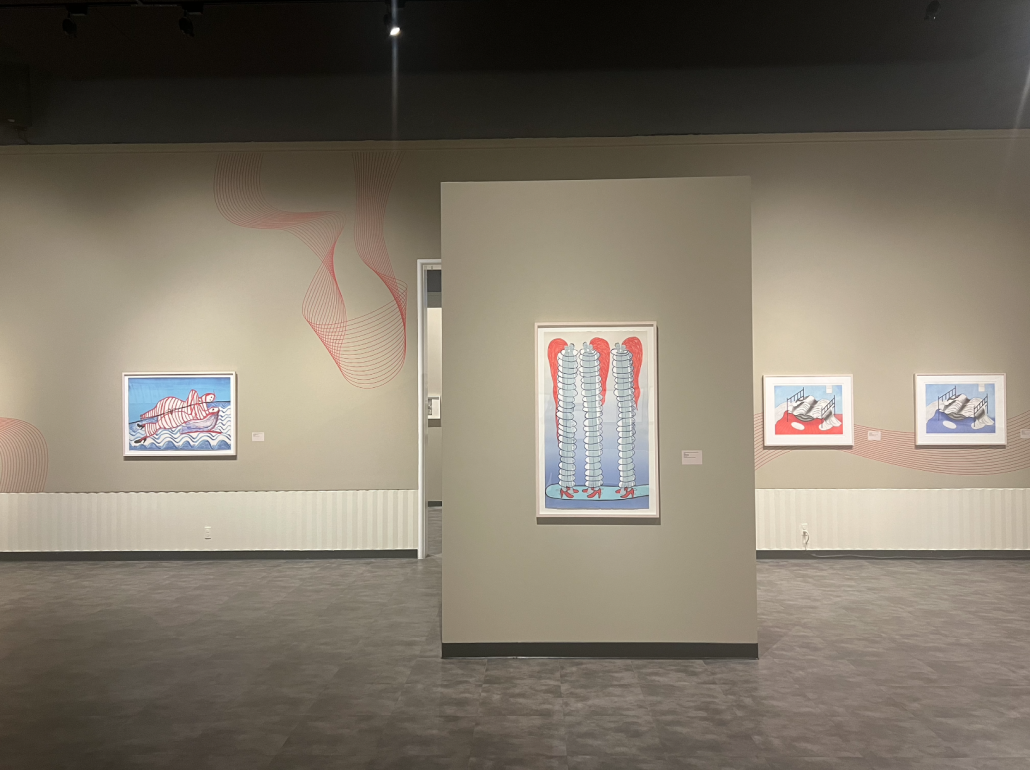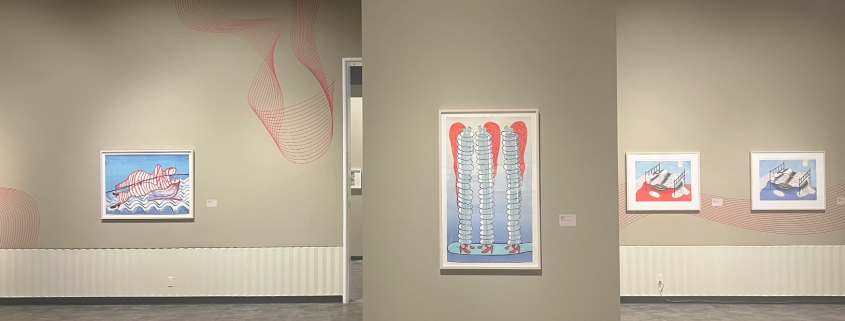New exhibit at Fisher illustrates healing through art

Emblazoned on the walls of the brand new exhibition at the Fisher Museum, Louise Bourgeois reflects on the powerful nature of art as therapy.
“Louise Bourgeois: What is the Shape of This Problem?” opened at the museum Sept. 6. The exhibit consists of 145 works borrowed from the Collections of Jordan D. Schnitzer and His Family Foundation and curated by Naomi Potter from the Esker Foundation. Though Louise Bourgeois is mainly recognized for her sculptural practice, this show focuses on different mediums including drawing, writing and printmaking.
Bourgeois, a French American artist, openly struggled with trauma and anxiety her entire life. Her work clearly points to her feelings of abandonment and loneliness and is a tangible product of her battle with her mental health.
The introductory text to the exhibit features Bourgeois’ summary of her approach to art with her famous phrase, “Art is a guarantee of sanity.” For her, art was not a hobby or even an option; it was a necessity. Her work is what kept her alive.
The exhibition gets its name from a nine letterpress diptych series, which is on display in the museum’s right wing. In this specific piece and in many of her works, she includes autobiographical writing, often illustrating a woman under pressure and in crisis as a mother, daughter, wife or artist. Despite bleak themes, Bourgeois finds ways to weave in glimpses of optimism and faith, referencing repairing the sky and seeing rays of hope in her work on display at Fisher.
Eclectic in nature, Bourgeois’ canon includes prints, engravings, textiles, poems, sculptures and holographic images. Upon initial viewing, it almost seems impossible that all of this work could be the work of the same artist. However, there is one major theme that ties much of the exhibition together: the symbol of a spider.
Throughout the 78 years of her career, Bourgeois repeatedly depicted the creature as a representation of maternal benevolent determination.
“Deliberate, clever, patient, soothing, reasonable, dainty, subtle, indispensable, neat and as useful as a spider,” Bourgeois wrote.
Bourgeois continues the exploration of the feminine psyche in her work, reimagining the female form with crafts traditionally delegated to women, including crochet, embroidery and sewing work. In this show, she elevates these art forms to represent not only femininity but also resilience and the beauty in making oneself whole again.
Throughout her series, “Crochet I-V,” located in the museum’s left wing, Bourgeois creates novel reliefs that are somewhere between sculpture and drawing. While at its core, every piece is a linear composition, each has its own texture due to the unique weaving, twisting and knotting. Bourgeois collaborated with Los Angeles-based print studio Mixografia Workshop for this special series.
One especially notable section of the show is the room in the very back of the gallery space, showcasing Bourgeois’ holographic work. The series features eight glass-plate holograms, made in the now defunct studio called C-Project in New York City. They are related to a series of sculptures she produced for the Tate Modern in London. Each work is incredibly dynamic and visually engaging, featuring a sense of depth not often seen in drawing and due to the nature of the medium. Within each piece, there is a detailed and borderline grotesque rendering of body parts, cages and empty chairs, creating an intimate look into Bourgeois’ feelings of isolation and disconnection to the world around her. While this section of the exhibition feels like a stark shift in tone from the rest of her work, it offers interesting insights into the artist’s mind and suffering.
In her work, Bourgeois treats her own anxieties and encourages the viewers to seek solace in their own way. Through this exhibit, Bourgeois demonstrates the courage behind the creative process, revealing her personal struggles or vulnerability. She tells a story about rebuilding her broken self in a way meant to inspire a communal sense of healing and restoration.
“Louise Bourgeois: What is the Shape of This Problem?” is on view now until Dec. 3.

